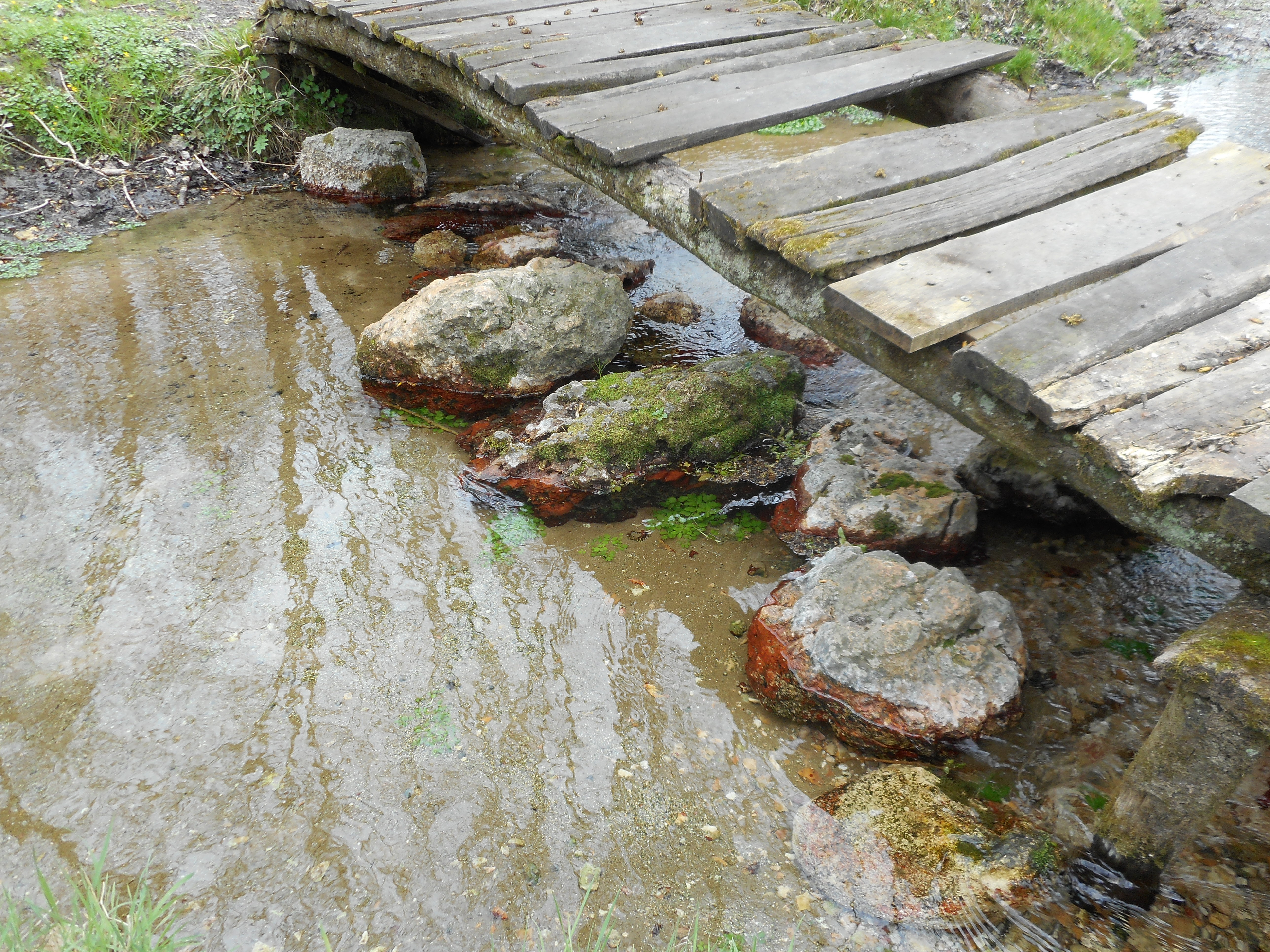Se situant au pré-Pineau et alimentant l’Esves, les « Fontaines rouges », parsemées de petites pierres tachetées d’algues rouges, ont donné naissance à une légende semblable à celle de la Chapelle-Blanche-Saint-Martin, selon laquelle saint Martin y aurait lavé ses blessures. Cette source où l’eau est accompagnée de bulle d’air, était réputée pour guérir les maladies des yeux.
Sur l’autre rive, presque en face, se situe la Fontaine Saint-Martin. Selon une tradition locale, Martin aurait résidé dans une cave complétée par un oratoire dit « Ermitage Saint Martin ». La source coulerait près de cette cave depuis que l’un des bœufs, que gardait Martin, la fit jaillir d’un coup de corne de Picot, le plus vieux du troupeau. Le saint se serait servi de cette eau pour soigner les maladies.
Located in the Pré-Pineau and feeding the Esves, the « Red Fountains », dotted with small stones speckled with red algae, have given rise to a legend similar to that of the Chapelle-Blanche-Saint-Martin, according to which Saint Martin washed his wounds there. This spring, where the water is accompanied by air bubbles, was reputed to cure eye diseases.
On the other side of the river, almost opposite, is the Saint Martin Fountain. According to a local tradition, Martin resided in a cellar with an oratory called « Ermitage Saint Martin ». The spring is said to have been flowing near this cellar since one of the oxen, which Martin was guarding, blew the horn of Picot, the oldest of the herd, into it. The saint is said to have used this water to cure illnesses.

 "/>
"/>